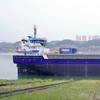DNV GL, NTU Partner in 3D Printing
The global quality assurance and risk management company DNV GL and Nanyang Technological University (NTU), Singapore (NTU) are supporting academic advances in additive manufacturing – the process of 3D printing – for the maritime, oil and gas and other industries, through a four-year research collaboration agreement.
Two new doctoral student (PhD) positions are being created through the Industrial Postgraduate Programme, supported by the Singapore Economic Development Board (EDB) and DNV GL. A further full time Research Fellow post is also being created at NTU’s Singapore Centre for 3D Printing.
The research agreement will focus on developing industry standards, quality assurance processes, certification and supply chain tracking for the additive manufacturing sector. It was signed by Dr. Pierre C Sames, Senior Vice President and Director of DNV GL Group Technology and Research, and Professor Tim White, Associate Vice President (Infrastructure & Programmes), NTU Singapore.
Market researchers SmarTech Publishing forecast that 3D printing will become a USD450 million market in the oil and gas industry by 2021, rising to USD1.4 billion by 2025.
"This research collaboration demonstrates DNV GL's commitment to R&D in 3D printing, and securing the safe deployment of the technique in maritime and oil and gas, at a time when the technology is undergoing rapid advances and as growth in its use is expected to grow exponentially,” said Brice Le Gallo, Regional Manager South East Asia and Australia DNV GL – Oil & Gas and Director of the Global Additive Manufacturing Centre of Excellence in Singapore.
“Our work with NTU, and with the support the new academic posts will receive from DNV GL’s Group Technology and Research, will help to strengthen our Global Additive Manufacturing Technology Centre of Excellence’s relations with academia. The collaboration agreement will also help us to further develop DNV GL’s approach to verification and certification of 3D printed parts as the technology develops.”
The investment in academia comes after DNV GL engaged in a joint industry project to study the feasibility of 3D printing in the maritime industry earlier this year, alongside 10-member companies from the Singapore Ship Association.
They will collaborate on the potential use of spare parts produced by 3D printers to help the capital-intensive maritime industry to cut costs and downtimes. Initiated by the Maritime and Port Authority of Singapore, the JIP aims to establish what commonly ordered parts are highly feasible for 3D printing with or without certification respectively.












